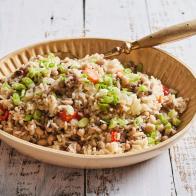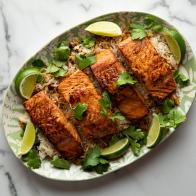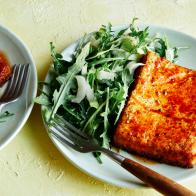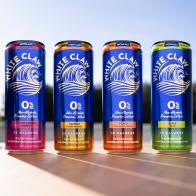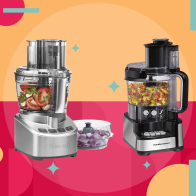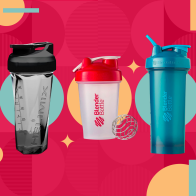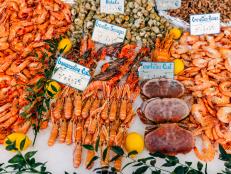What’s the Difference Between Farm-Raised and Wild-Caught Salmon?
Is one better than the other?

Jinli Guo/Getty Images
With so many salmon options, it’s easy to get overwhelmed. One question that often comes up – what’s the difference between farm-raised and wild-caught? Is one better for you than the other? Do they taste different? Here, we take a deeper dive, so you can choose the best salmon for your needs.
Farm-Raised Vs. Wild-Caught Salmon
Wild-caught salmon is fished out of natural habitats at various locations throughout the world, while farmed fish is raised in aquaculture environments, one of the fastest growing food production systems in the world. According to the Seafood Nutrition Partnership, global demand for seafood has outgrown what oceans can support. Sound aquaculture practices can help meet demand while reducing damaging environmental impacts on wild fisheries. Learn more about types of aquacultures here.
Organizations like the Aquaculture Stewardship Council (ASC), Best Aquaculture Practices (BAP) and Seafood Watch help ensure best practices for aquaculture operations and provide tools that consumers can use when shopping for sustainable seafood.
Should You Buy Farmed-Raised or Wild-Caught Salmon?
“My advice is to not get caught up in the farmed versus wild salmon debate. Both are great choices and the type you choose will depend on your flavor preference, your budget and what you feel good about buying,” says Jenny Shea Rawn, MS, MPH, RD, registered dietitian and author of newly released cookbook Coastal Kitchen.
From a nutritional standpoint, there are some differences no matter which type of salmon you choose. Farming practices may impact nutrient profiles as do the geographical locations of wild-caught fish.
“Nutritionally speaking, both wild and farmed salmon are incredibly nutrient-rich, and both are packed with brain and heart health-promoting omega-3 fatty acids (healthy fats),” says Rawn.
“Yes, the amount of omega-3s will vary depending on what the fish is fed or what it eats in the wild,” she adds. “But regardless, the omega-3 content of both is very high. So, whether you’re choosing sustainably grown and harvested farmed salmon or wild salmon, salmon across the board is one of the healthiest foods you can eat.”
When considering your options, do note that farmed and wild salmon taste different and may require varying cooking methods. “The flavor profiles of all the salmon varieties differ (sometimes quite drastically). Generally, farmed salmon is milder, while wild salmon, depending on the type of wild salmon, has a fuller flavor.”
Rawn also shared a great tip to keep in mind when preparing your salmon. “Wild salmon also tends to be a bit leaner than farmed salmon, and because of that it is a bit easier to overcook.”
As Rawn points out – with so many options, perhaps the best thing to do is try both and see what you prefer. “We buy both fresh farmed and wild salmon in our house, but we prefer the mild flavor of farmed salmon – because that’s what my kids prefer. We also regularly purchase wild pink salmon in a can and pouch – we eat this salmon on top of salads, in salmon cakes and burgers and beyond.”
For some recipe inspiration, check out these recipes.
Bottom Line: Look for farmed and wild salmon that has been sustainably caught. And, as Rawn suggests, “When faced with the farmed versus wild salmon debate … choose (and eat!) what you like!”
Related Content:
